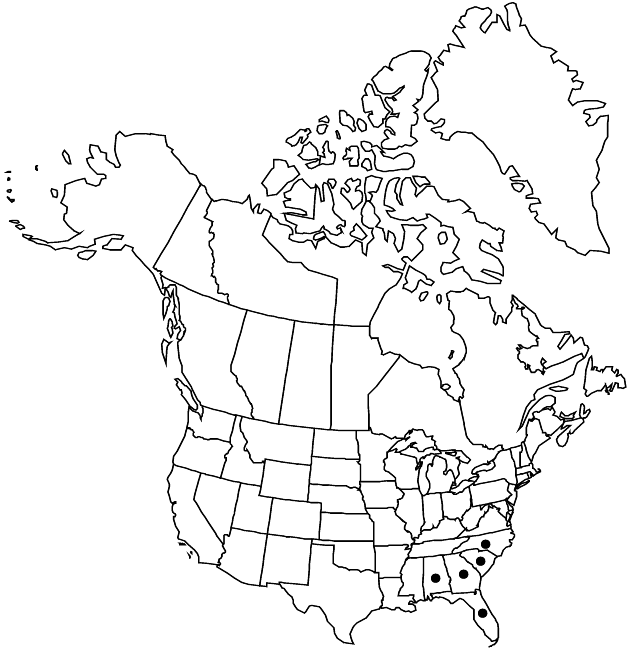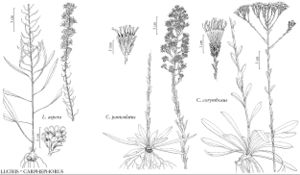Carphephorus paniculatus
Rhodora 70: 483. 1968.
Plants (30–) 50–120 (–180) cm. Stems densely and coarsely villoso-hirsute, eglandular. Leaves: basal and proximal cauline oblanceolate to narrowly elliptic, mostly 5–35 cm, margins plane; cauline much reduced, faces not glanddotted. Heads in thyrsiform (often ± columnar) arrays. Peduncles stipitate-glandular (each with a subtending bract). Involucres (3.5–) 4–6 mm. Phyllaries 5–12 in 1–2 (–3) series, oblanceolate, glanddotted or stipitate-glandular (sometimes with eglandular, biseriate hairs as well), apices acute to obtuse. Receptacles epaleate or partially paleate (paleae 1–2). Corollas glandular, lobes 1–1.5 mm. Cypselae eglandular; pappus bristles in ± 1 series. 2n = 20.
Phenology: Flowering (Aug–)Sep–Dec(–Jan).
Habitat: Moist or wet, low ground, wet prairies or savannas, swamp margins, pine, pine-palmetto, and palmetto flats
Elevation: 0–50 m
Distribution

Ala., Fla., Ga., N.C., S.C.
Discussion
Selected References
None.
Lower Taxa
"fine" is not a number.
